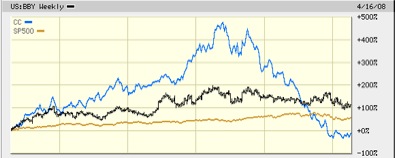Hey! Your Company Just Turned Into a Supply Chain!
What’s the biggest business change of our time? You might say it’s the Internet. Or globalization. Or outsourcing.
But let me make a case for something else. Something that incorporates those other ideas, but puts them all in a bigger context. Something Big but Simple.
We are moving from a world of Competition to a world of Commerce.
In the old competitive world, most business was transacted within companies, as part of a hierarchically-organized management process.
In the new commercial world, those same business transactions are happening increasingly between companies—not within them—as part of a horizontally organized commercial process.
Let me break that down:
• Business is now done between, not within, companies.
• Business is now done not hierarchically, but horizontally.
• Transactions are no longer managed within firms; they are bought and sold between firms.
• The people you transact with no longer work for you—now they sell to you.
When Tata Motors recently announced the $2500 car, the interesting fact was not the cheapness of the car, but the authors of the announcement. It was the Tata supply chain, not Tata the company, who would make the car. Tata is willing to outsource even the final assembly.
Companies still compete with each other: e.g., GM vs. Toyota, Citibank and Chase, etc. But the bulk of business transactions are no longer internal, they are external, and they are not between competitors, but between suppliers and buyers—collaborators, not competitors. It’s not that competition doesn’t exist anymore, it’s that your company isn’t in charge of your competitiveness. Your supply chain is. And you have to get along with your partners to share in your collective success.
Those who persist in viewing the world through competitive lenses are marginalizing themselves. It’s a relationship world. You can’t go it alone. Those who see through collaborative lenses are, paradoxically, those who will win—not those who set out to "win" by competing.
GM no longer competes in the car business—they just add the final 10–20% of the cost structure in an automotive supply chain. The real “car business” is a whole bunch of companies, inextricably linked in a commercial web. Except for those who continue to believe their suppliers and customers are their competitors. To compete is, increasingly, to lose.
Those who work together well—those who can play in the sandbox nicely with others—are those whose supply chain will win, and them along with it. Those who still think they’re competing with their suppliers and customers are those whose supply chains will lose, dragging them along with it.
Competitive advantage doesn’t determine success anymore—collaborative advantage does.
It’s the external commercial relationships that dominate the value add in the new economy, not the internal ones.
Competition isn’t dead; it’s just not where the action is. Commerce—the ability to get along with others in a supply chain—is where the action has gone.
Hey! While you were sitting in a classroom reading about competitive strategy, your company just morphed into a supply chain!

